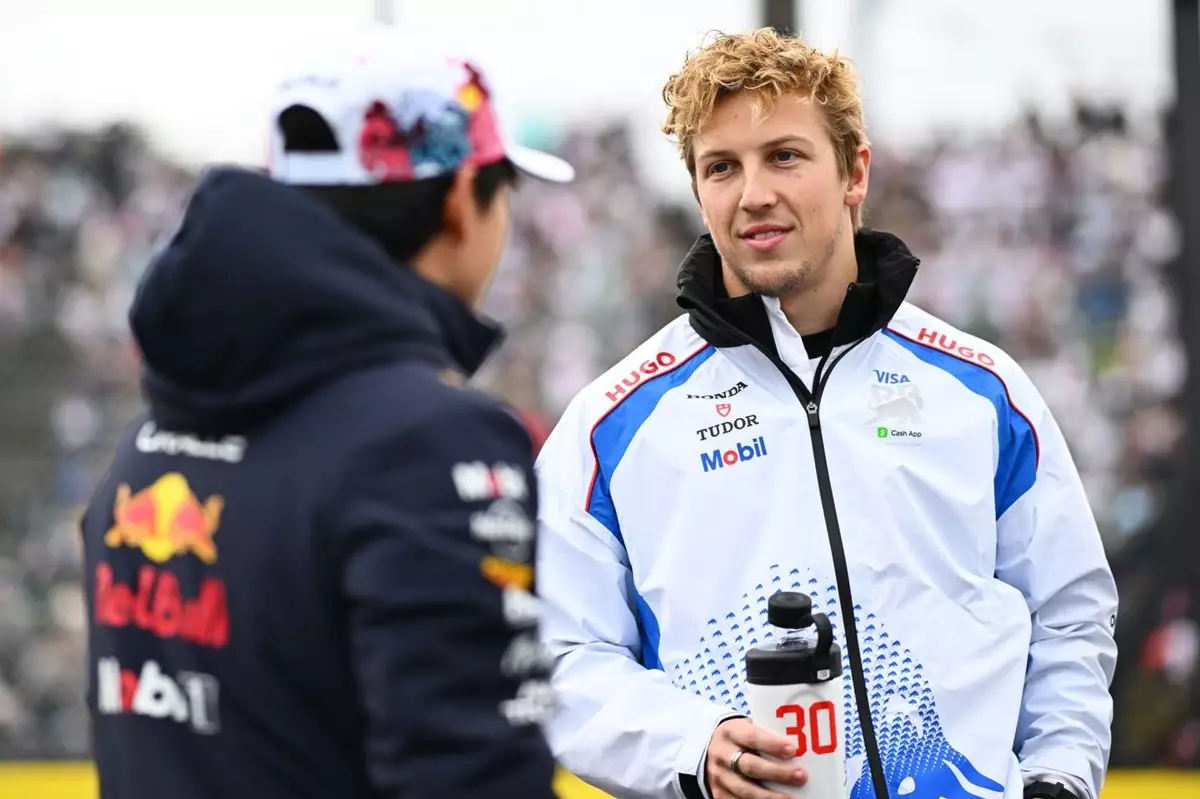In the high-stakes world of Formula 1, the performance of drivers can be intricately tied to both their mental state and the machine they’re piloting. The RB21, while showcasing a wealth of potential, appears to operate within a limited performance window. This nuance has become a pivotal talking point, especially when observing the contrasting fortunes of Red Bull’s emerging talents in the rotational second seat. Particularly spotlighted are Liam Lawson and Yuki Tsunoda, whose journeys reflect differing approaches to mining the car’s capabilities.
Lawson’s experience has been marked by a comedown to the Racing Bulls team, where he has been profiled as second to Isack Hadjar, who is acclimating to the VCARB 02. This hierarchy has affected Lawson’s confidence and performance, a factor exacerbated by penalties that have deeply hampered his ability to showcase his racing skill. In contrast, Tsunoda has carved out an impressive narrative, managing to exploit the car’s performance dynamics effectively, despite entering the season without the edge of pre-season testing.
The Contrast of Experiences: Lawson vs. Tsunoda
Reflecting upon their performances, the disparity is notable. Hadjar’s assertive maneuvers, like overtaking Fernando Alonso early in the Saudi Arabian GP, demonstrate a tactical prowess that Lawson has struggled to mirror. Lawson’s extended battle with Alonso, where he lingered behind for ten laps, illustrates a crucial missing link: an ability to execute strategically and maximize tire performance over race distance. The unfortunate reality is that Lawson’s attempts are often overshadowed by a series of penalties and awkward overtaking strategies.
This gap in performance speaks volumes about their respective readiness. Hadjar’s ability to leverage the car for better tire management while under duress signifies an understanding of the craft that Lawson is yet to fully grasp. Each driver’s approach seems to reflect not only their performance metrics but their adaptation to challenge—whether in responses to situational pressures on the track or emotional weight from demotions and expectations.
Overcoming Adversity: Lawson’s Psychological Hurdles
Central to Lawson’s struggles is the warfare within—specifically, the psychological hindrances that typically accompany a demotion in a sport as demanding as F1. While he claims that his confidence hasn’t waned post-Red Bull demotion, the reality is quite different. The truth often requires a painful confrontation with oneself. His reluctance to acknowledge this dip is perhaps the most significant barrier standing in the way of his performance renaissance.
Formula 1, like all competitive arenas, tests one’s resolve. The lesson to be derived from the timeless song “Tubthumping” resonates well here: the essence of a career is not merely found in moments of success or failure, but in the tenacity to rise after setbacks. Lawson’s journey can pivot if he embraces this notion, utilizing the tumultuous moments of his career as fuel rather than chains.
The Competitiveness of Midfield: A Focus Shift
Currently, the grid showcases a fierce competition for places beyond the top teams, and Lawson’s immediate focus should shift to securing the championship’s fifth position. This battle with teams like Williams indicates that there’s a genuine opportunity for Lawson to carve out a name for himself as someone capable of solidifying points finishes. The real challenge lies in targeting consistent top-ten placements rather than getting caught in the relentless fray with established teams like Aston Martin and Sauber.
For Tsunoda, the task is different yet intertwined with Lawson’s story. Having been identified as the better fit for Red Bull initially, Tsunoda is tasked with unlocking the full potential of the RB21. As he becomes more familiar with the car and improves his qualifying performances, the expectation is for him to stay persistent in extracting every ounce of speed from the machine. With a focus on consistency, Tsunoda’s growth trajectory has strong potential as he aspires to not only compete but secure podium finishes amidst qualifying challenges.
The Road Ahead: Patient Progress and Promising Talent
In the context of Red Bull and the broader F1 landscape, the narrative of Lawson and Tsunoda embodies the essence of Formula 1’s ruthlessness and opportunity. Patience will be key, as both seek to harness their skill sets and the vehicle’s features to consistently deliver on the track. Their experiences illuminate the broader theme of young talent navigating a sport saturated with high stakes and intense scrutiny.
As both drivers embark on their respective paths, the focus must remain firmly on reproducing potential into tangible results. For Lawson, the long-term goal remains to reclaim confidence and competitive relevance. For Tsunoda, the focus is to unlock top performance to firmly establish himself within the Red Bull hierarchy’s vision. In a sport that thrives on narratives of resilience and redemption, the storylines of these two drivers continue to enrich the fabric of Formula 1 as they seek to redefine their legacies.


Leave a Reply